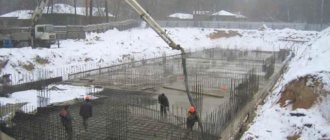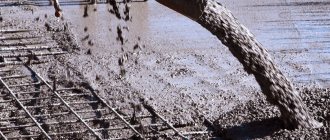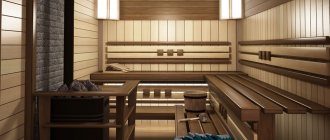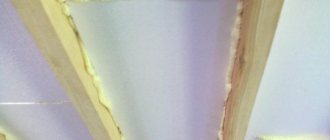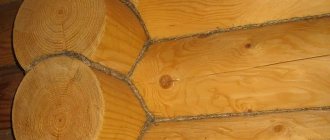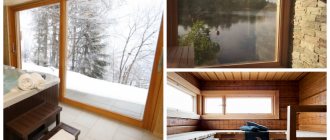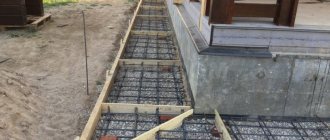Preparing mortar for brickwork in the summer is not difficult, and most of all masonry work is carried out in the warm season, completing the masonry before extreme cold. But there are situations when it is not possible to complete the entire volume of planned work on time, and masons are forced to finish the brickwork in the cold season.
In such extreme conditions, it is necessary to take into account the properties of the binders of the mortar and the freezing characteristics of the masonry mortar at temperatures below 0 degrees Celsius. The basis of the solution is water, which at sub-zero temperatures begins to freeze, which immediately turns the solution into an ice block.
To solve this problem and increase the binding properties of the masonry mortar, I add various chemical reagents to the solution, which accelerate the processes of cement hardening and increase the plasticity of the mortar.
Most often, the chemicals used are sodium nitrate, potassium carbonate and sodium chloride, but other chemical compounds are also possible. When adding chemical reagents to the solution, the air temperature should not be below 5 degrees Celsius. In addition, you cannot dilute the solution with reagents if it is already frozen or after it has recently been defrosted!
The described chemical reagents should be used only for certain types of masonry. Calcium and sodium chloride are used only for underground masonry, due to the fact that they contribute to the appearance of stains on the masonry seams.
The stains are white, which accordingly spoils the aesthetic appearance of the brickwork when these reagents are used for facing masonry. But this is not the main disadvantage of these reagents - if used excessively and disproportionately, the reagents contribute to the destruction of the brick. To obtain a high-quality mortar for bricklaying in winter, chemical reagents must be used in strict dosages!
Sometimes the process of building a building is very delayed; it continues after the arrival of cold weather.
But summer cement mixtures for construction consist of 3-4 main components, one of which is water, which becomes ice at negative temperatures. Therefore, special options for mortars for laying bricks in winter were invented. They contain additives that reduce the freezing point of water in the mixture.
The effect of frost on the solution
The hardening of the solution occurs due to the reaction between water and cement. As a result, a gel-like mass is created, which over time becomes a stone.
And the lower the temperature around, the slower the solidification process will occur. So, at a level of 5°C, this process will last 4 times slower than it would at 20°C. But when the mark reaches 0 °C, hardening stops altogether.
Negative temperatures negatively affect the structure, as well as the strength of future hardened cement.
In addition, the interaction between the two binder components stops completely, due to the fact that the water becomes ice. In addition, in solid form it increases in volume. This causes the solution to lose the strength it had before freezing.
Also, due to freezing, cement loses its elasticity significantly, due to which the compaction of horizontal joints in the masonry is insufficient.
In addition, after thawing, uneven settlement occurs, and this already threatens the strength of the structure being built. That is why it is recommended to use mortar for winter bricklaying. It is created by adding the required amount of special additives to the usual mixture, which impart frost-resistant properties.
Types of additives
Experts distinguish 2 groups:
- retarders or weak accelerators of hardening;
- impurities that accelerate the hardening of the concrete mixture.
Classification of chemical-based additives
| Name | Characteristic |
| Antifreeze | Reduces the crystallization temperature of the mixture |
| Does not affect the rate of structure formation | |
| Increases or slightly decreases the speed of setting of the solution | |
| Sulfates | Provides greater speed of creating mixture density |
| Promote heat release | |
| Accelerator additives | Lowers the freezing point of liquid |
Cement-lime mixture
In the summer, when the outside temperatures are above zero, classic cement mortar is used to build walls or other types of brickwork. It is easy to prepare with your own hands from the following ingredients:
- Cement; Sand; Lime (may not be used at all in simpler mixtures).
First, a limestone dough is created.
It is made by mixing water with lime. Next, the resulting slurry is filtered using a fine sieve. Separately, but in parallel, a mixture consisting of sand and cement is mixed.
Next, the resulting limestone dough is poured into it, as well as the required volume of water and mixed until a homogeneous mass is created. It is with this mortar that bricks are held together in the summer. In cold times, things happen a little differently.
Minimum concrete hardening temperature - highlights
When working with concrete, it is very important to take into account the influence of air temperature on the speed of its hardening and strength. Ignoring this point can lead to a decrease in the quality of the material, which in some cases is simply unacceptable. Based on this, we will then consider what is the optimal temperature for concrete hardening, and what to do if the air temperature is significantly lower than this indicator.
Mix for winter masonry
The winter solution differs from its summer counterpart only in certain additives. They allow you to reduce the level of freezing of the cement mixture, due to which it does not lose its state of aggregation and continues to harden. When the “summer” solution is ready, certain chemicals are added to it to impart the desired properties:
- Calcium chloride; Potash, also known as potassium carbonate; You can also use sodium nitrite.
The use of each of these substances has a specific effect on the mixture. But the goal is the same - to reduce the temperature when the water turns into a solid state.
The choice of substance for a particular case depends on the air temperature. Such additives are added to the solution during the mixing process immediately after pouring water. Due to this, it is possible to evenly distribute inclusions throughout the entire composition of the cement mixture and achieve the desired result.
However, after reading a recipe, you should not rush to implement it. Modifications of the solution do not always show the desired effect.
So, if you add salt to the mortar for laying bricks, this will lead to its subsidence. This situation has a very specific justification. When the brick mortar used for construction in winter contains a significant amount of salt, after the onset of positive temperatures, the wall will shrink and tilt.
The point here is not even the amount of salt added, but the very fact of its presence. When industrial additives, such as sodium chloride, are used, they are one of the components of the entire antifreeze mixture. Together they lead to a chemical reaction, due to which a new substance is formed, so they should not be perceived separately.
Excavation
Frozen soil is not a gift: it is very difficult to work with for two reasons. Firstly, purely physically it requires a lot of effort. Secondly, loosened frozen soil is a mixture of lumps of rock hardness, between which air voids remain. It is not as flexible as in summer, so compacting it is not possible at all. When the soil thaws, it will inevitably sag, and very strongly. Therefore, in winter it is strictly not recommended to make embankments or backfill the foundation cavities along the walls.
But the “stony” hardness of the frozen earth can be used to your advantage. For example, some future homeowners take risks and dig trenches and pits in winter: since everything is frozen, the slopes can be neglected, and the vertical walls of the excavations cannot be secured. Thus, the volume of excavation work becomes less. Another thing is that the work itself may become more expensive, because workers will quite logically request an increased tariff.
Methods for developing frozen soil can be divided into several main types:
- mechanical loosening is done using tractor rippers or excavators;
- if you need to thaw the soil, use heating elements, hot houses, fires, electric heating and salt solutions;
- If you need to slow down the freezing of the soil as much as possible, you can soak it with a salt solution. This may be necessary if there is very little work left, and frost suddenly strikes. In this way, you can extend the process of “petrification” of the earth for several days.
But in general, experts say: excavation work in winter can be carried out only if it is absolutely necessary.
Photo ustanovkasvai.ru
Application
There are not many rules when using mortar for laying bricks in winter, but you need to know them.
Otherwise, a building erected at sub-zero temperatures will sag or collapse completely after the onset of cold weather. First of all, the temperature of the solution during installation should not be lower than 5 °C. Once it has frozen, defrosting it again will no longer allow the creation of staples. This is due to the loss of its properties. The next rule for using a frost-resistant solution in winter is to add calcium carbonate.
It is prohibited to use this inclusion when laying silicate products. And in the case of using ceramic bricks, pay special attention to the quality of the masonry itself. This is due to the fact that such chemical additives retain the astringent properties of the solution used, but the performance is lower than in warm weather. Due to this, hardening takes longer, and the quality of the bonds created is lower.
Concreting in winter
It may be necessary to use concrete in cold weather in a variety of cases - when it is unprofitable to stop construction for an entire season, in case of emergency work, etc. Taking into account the detrimental effect of sub-zero temperatures on the material and its technical characteristics, concrete must be heated. When the temperature inside the solution is higher than the temperature outside, deformations may occur.
The concrete is heated until a critical strength indicator is reached. If such data is not in the design documentation, then the value is taken as 70% of the design strength. When there are requirements with waterproof/frost resistance values, then the critical strength is 85% of the design.
The main methods of heating concrete for pouring at minus temperatures:
- Warming up the components themselves to prepare the mixture.
- Using the thermos effect.
- Implementation of electric heating.
- Application of steam heating.
Thus, there is no question at all at what minimum temperature concrete can be poured. The task is to optimally prepare the mixture and the object in accordance with the working conditions to preserve the technical properties of the material and the basic requirements for strength, reliability, and durability.
The simplest and cheapest option is to heat up all the components used to prepare concrete. They are heated so that at the time of pouring the concrete has a minimum temperature of +35-40 degrees.
All materials except cement are heated: crushed stone/sand up to +60, water up to +90, cement is simply left in a warm room for a while (so that it is at room temperature). Then mix all the components and fill.
Thermos method
This option is relevant in the case of pouring massive structures. Additional heating is not provided, but the mixture being laid must exhibit a temperature of at least +10 degrees (preferably more). This method consists in allowing the poured mixture to acquire critical strength during the cooling process.
The principle of this method is that the concrete reacts and begins the hardening process, which is exothermic (that is, accompanied by the release of heat). Thus, the concrete will self-heat. If heat loss is excluded, concrete can warm up to +70 and above.
The formwork is reliably protected with heat-insulating materials, eliminating heat loss from concrete that is in the process of hardening. Water does not freeze, the concrete monolith gradually gains strength without destroying the internal structure. This option is used for pouring foundations in winter; it is considered the simplest and most economical, since it does not require the use of any equipment.
Electric heating of concrete mixture
When thinking about the temperatures at which concrete can be poured, many consider electric heating as a way out of the situation. Warming up can be carried out using several methods: using electrodes, the induction method and various electric heating devices.
Heating by electrodes is carried out as follows:
- Electrodes are introduced into the freshly poured mixture.
- Then current is applied to the electrodes.
- As current passes through the electrodes, they heat up and transfer heat to the concrete.
The current must be alternating, since a constant one will cause the electrolysis process, which is accompanied by the release of gas. The gas shields the surface of all electrodes, the current resistance increases significantly, as a result of which heating is noticeably reduced. If reinforcement is laid in concrete, it can be used as an electrode.
Folk remedies
Some people add regular automotive antifreeze to the mortar to give it the desired properties. But after introducing it into the composition, it is necessary to constantly monitor the quality of hardening. Otherwise, the cement mortar will not harden correctly.
To do this, do-it-yourself winter brickwork must have a small number of nests in which plugs will be inserted. After their removal, it becomes possible to measure the temperature of the solution in this area. Due to this, the condition of the cement and hardening are monitored.
It is necessary to build walls when the masonry mixture for bricks is supplemented with antifreeze, carefully and taking the necessary precautions.
This is due to the fact that such inclusions belong to inorganic solvents, as well as mineral salts. Therefore, during the masonry process, workers must use protective clothing, gloves, and face and eye protection. Failure to comply with these measures results in chemical burns.
Pros and cons of antifreeze impurities
The positive aspects of use are:
Such substances allow the necessary work to be carried out even in winter.
- carrying out work on the construction of concrete structures even in cold weather;
- increasing the strength of the building as a result of increasing the adhesion reaction;
- use of the product in industry;
- increasing service life;
- increase in frost resistance, moisture permeability;
- low cost of additives;
- acceleration of hardening of the concrete mixture;
- ease of shaping due to increased mobility;
- unchanged solution structure.
However, builders also highlight disadvantages:
- using more cement;
- toxicity of some substances included in the composition;
- reduction in the declared power and strength of the concrete product;
- increased risk of corrosion.
Thawing winter masonry
When, after winter hardening, the mortar in the erected wall begins to thaw, a sharp loss of stability occurs.
And in the case of uneven thawing, it even leads to deformation of the wall. Due to this, it is important to control the process and carry out timely measures to maintain the stability of the erected structure. When the masonry is laid using the freezing method, during its thawing, they carefully monitor how it occurs. More attention is paid to the power elements on which the stability of the entire erected structure depends.
It is necessary to monitor the condition of the constructed masonry until the thawing ends, and constant above-zero temperatures set in. Due to the fact that the walls of the building, located on different sides, are not evenly heated by nature, it is recommended to cover the northern side with parchment. This will create equal conditions and a uniform thawing process Date: 01/09/2015 Comments: Rating: 26 Construction work is a rather labor-intensive process, but in winter it becomes more complicated. In order to make and use winter mortar for bricklaying, you need to know a number of features. Brickwork diagram.
